No Mow May
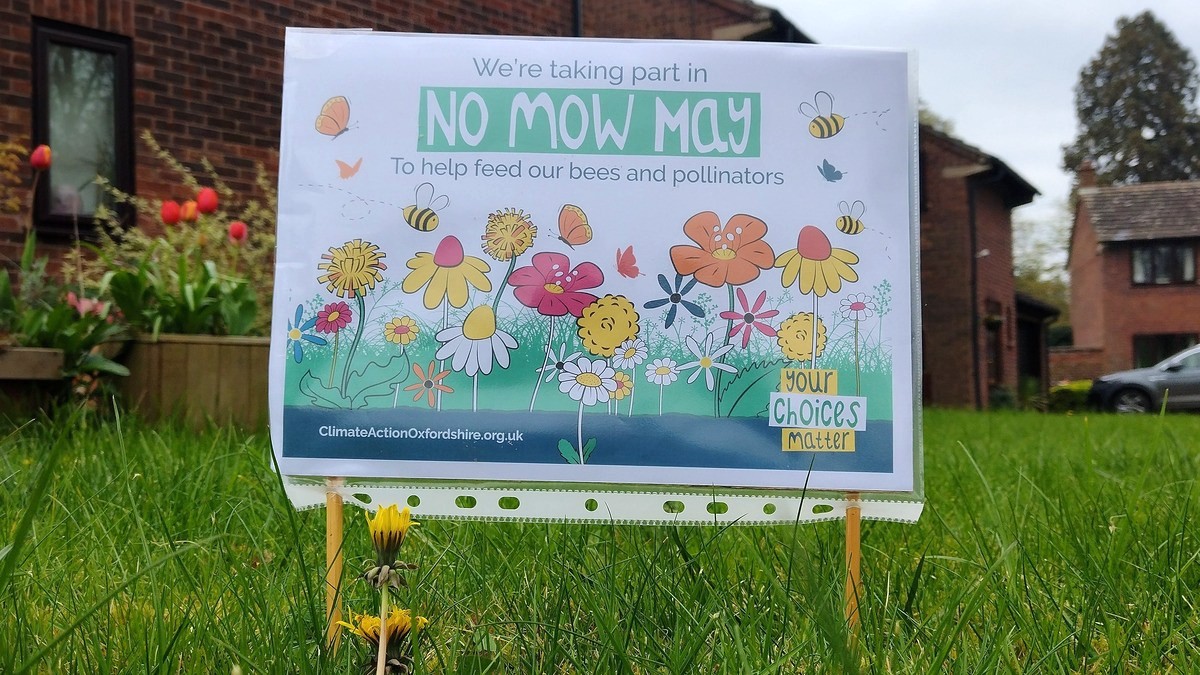
What is No Mow May?
No Mow May is Plantlife’s annual call to lock up your lawnmowers and not mow your green spaces during May - to let long grass and wild plants grow naturally. That provides a much-needed boost for wild plants and wildlife throughout summer.
How does it help?
Let wildflowers and long grasses grow in your lawn to provide a feast for pollinators, tackle pollution, reduce urban heat extremes, and lock away atmospheric carbon below ground.
How can I take part?
It couldn’t be simpler. Lock up your mower over the month of May to provide a much-needed boost for wildlife throughout the summer. You can choose not to mow some or all of your green space. Just sit back and watch the flowers grow.
Smaller plants such as Daisies, Dandelion, Selfheal and Clover will get a chance to flower, providing a butterfly and bee buffet. You can continue to mow less and at different lengths and frequencies throughout the summer.
If you have already left all or part of your lawn unmown from the beginning of the season, that is great! This means that you have let a mini-meadow grow and are likely to have a much higher variety of flowers in your lawn if you choose to.
Don’t worry if you’ve not left your lawn unmown at all or have recently mown it – it’s committing to leaving your lawn, whether all of it or some of it, unmown for longer which is important.
Print out a poster and let people know you're joining in
There are three versions to choose from - two to print and colour yourself, and one that's already coloured for you.
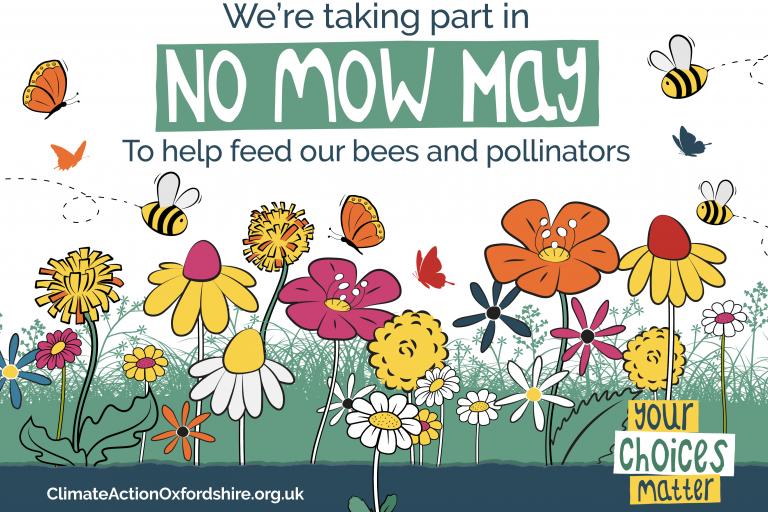
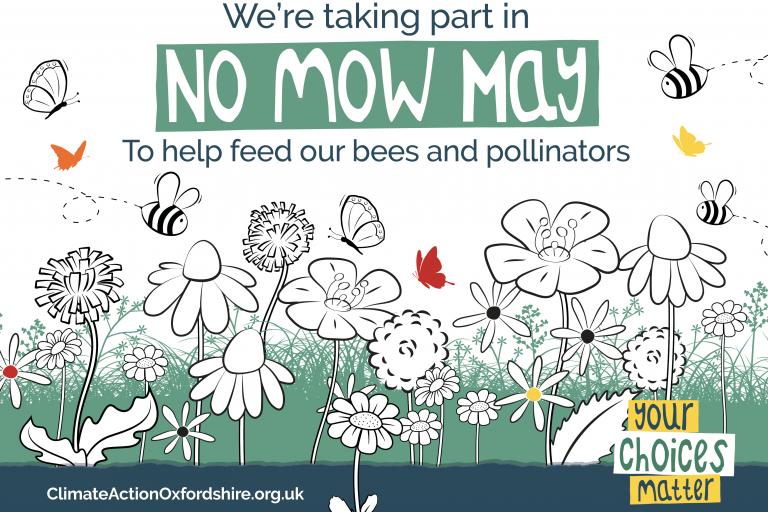
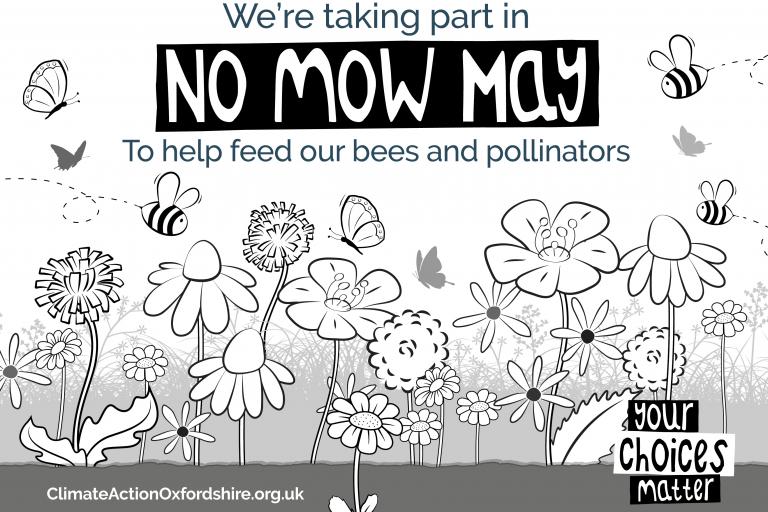
Make your weatherproof No Mow May sign
Step 1. What You'll need
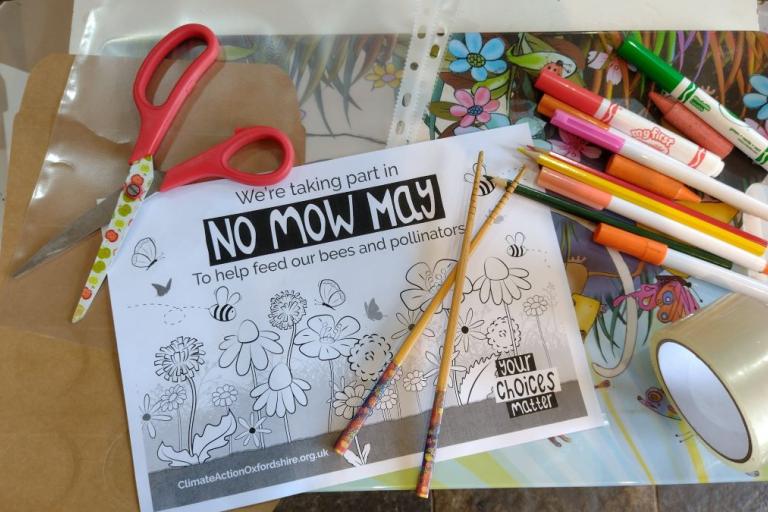
- Scissors
- Sellotape
- Cardboard
- Colouring pens
- Clear plastic punched pocket ( the kind used to protect paper in folders ) or a ziplock bag
- Chopsticks / old pencils / pens or any sticks
Step 2. Print your sign
Print out and decorate your sign, however you like.
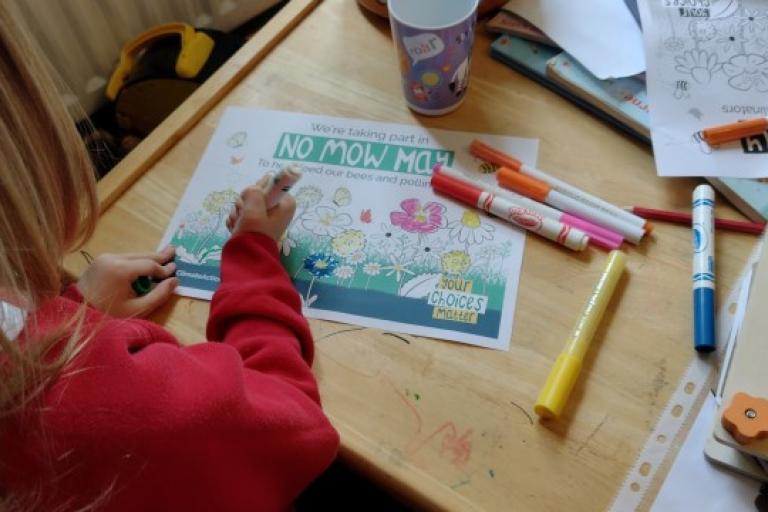
Step 3. Put your sign in the pocket or bag
- Cut your cardboard so it's a little smaller than the sign you've printed
- Slide it in to the pocket and then slide your sign in in front of it ( the cardboard will help keep your sign upright )
- Carefully sellotape up the open end of the plastic pocket, to stop rain from getting in.
Step 4. Attach your chopsticks
- On the back of your sign, sellotape a chopstick at each end, to make legs for the sign. If you've used a 'punch pocket', you can thread the chopsticks through one of the holes at the bottom to help secure it.
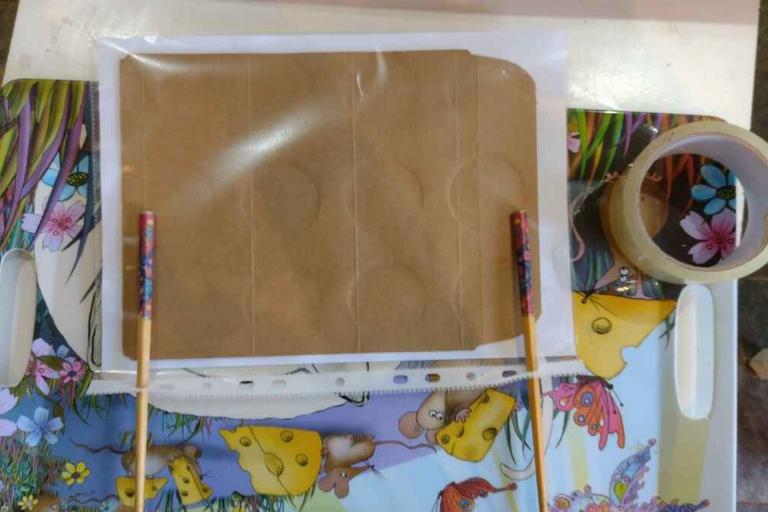
Step 5. Plant it!
- Take your sign into your garden and push the chopsticks into the ground to stand it up.
- Make sure to pick somewhere that people can see it from!
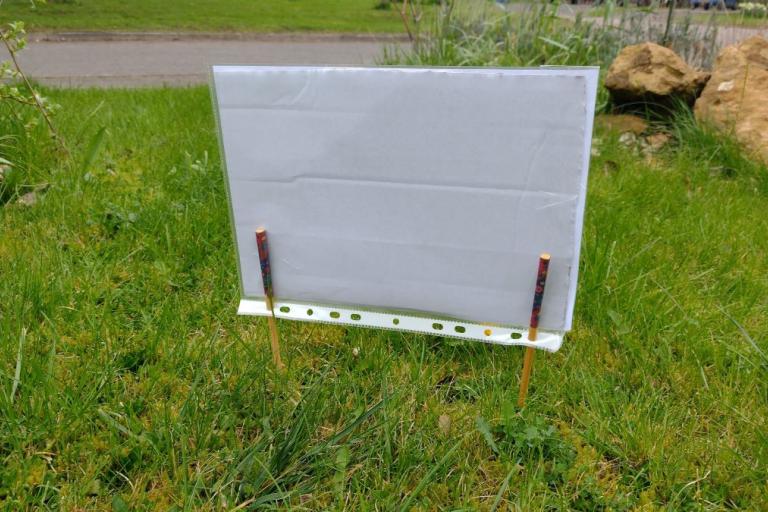
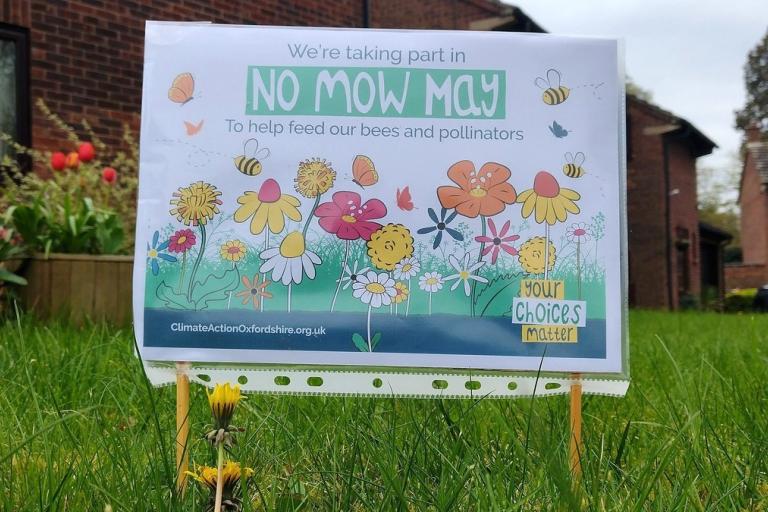
Questions & Answers
My lawn is very small, will it matter if I take part?
Yes, please join in! Collectively as garden owners we can have a huge impact on biodiversity by letting every patch of grass flourish throughout the summer. Whether you have a postage stamp sized patch of grass or a rambling estate, we can all make a difference in our own way.
I don’t have a garden, can I still take part?
Yes. If you don’t have a lawn, you could help make sure another green space is left unmown, such as field or a space at your place of work or school. Or you could join with others and participate as a community.
What do I do after May? Do I have to mow my lawn?
We encourage everyone gardening for nature to cut less for longer. Results from our previous No Mow May surveys show that keeping two to three different lengths of grass throughout the summer will maximise the diversity and quantity of flowers and the nectar they produce:
Leave some areas of long grass completely unmown all year to let taller flowers like Oxeye Daisy and Field Scabious come into bloom. These long grasses provide valuable feeding material, shelter, and nesting sites for species such as hedgehogs and toads – connecting them across our landscape.
Mid length ‘meadow’ areas are mown with cuttings collected just 2-3 times per year outside of April-August. They allow taller growing summer flowers to flourish like Meadow Cranesbill, Musk Mallow, knapweeds and scabiouses.
For the rest of the lawn, you can keep the grass shorter by mowing once every month to a height of 1 or 2 inches (2.5 to 5 cm). This allows smaller plants such as daisies and Bird’s-foot-trefoil to flower in profusion, providing a fabulous food source.
Sign up to No Mow May to get a comprehensive lawn guide written by Plantlife wildflower experts.
How do I identify any bees or other pollinators that visit?
There are around 270 different species of wild bee in Britain and they can be pretty tricky to identify. For bumblebees, the Bumblebee Conservation Trust have produced a wonderful identification guide here. For butterflies, see the rather lovely Butterfly Conservation identification guide here.